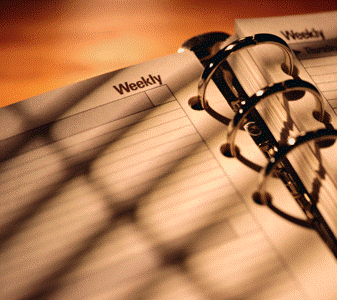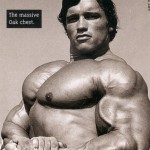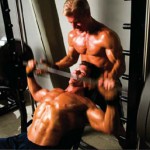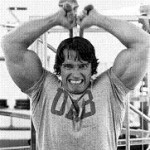Many people come up with their own workout schedules for the week, but sometimes their routines might not be the most optimal variations when it comes to targeting specific muscle groups. Sometimes they attempt to group muscles together that don’t really go as well together as some others (you can group any muscle combination you want and still get results, but some groups fit together like a puzzle and give you more bang for your buck), or they follow up another day’s training by hitting a muscle group that got hit hard as a secondary the day before. These types of small issues aren’t something to really stress over, however, they do impede your progress and eventual results. That’s why when you create a workout schedule, you want to avoid these small problem areas to really get the most out of your training sessions for the week. After all, to achieve muscle fatigue you want each muscle group to be as fresh as it can and ready for a beating. Before we begin, I’d like to mention that there are two main ways to train: split or full-body workouts. In a split, you are combining muscle groups (or training a solo muscle group) each time you go to the gym, whereas in a full-body routine you are going to the gym a few times a week to hit your entire body at once.
Split Workouts:
To get the most out of a split routine, you have to make sure that your workout schedule does not produce conflicts with the recovery of your muscles while at the same time impeding the possibilities of the muscles you are going to work the next day. To illustrate this, let’s use some examples:
1. Chest -> Shoulders -> Triceps
When working chest, all 3 are involved. If someone has an intense chest workout, you can assume that their triceps got slaughtered and their shoulders will be fried (especially if there’s a benching focus in your chest routine). Therefore, to come into the gym the day after a chest workout and decide to do shoulders isn’t the best idea. Can you do it? Of course. Will it place your shoulders in the most optimal scenario for growth? No. Your shoulders will already be exhausted from your chest workout, so punishing them when they’re not at their best can only impede your ability to grow them. As a result, your best bet is to keep these two muscle groups at least 1 day apart.
Since triceps are heavily involved with both the shoulders and the chest (unless your shoulder workout only includes front/side/rear raises), keeping them as a finisher after a chest workout or shoulder works well. They can rest in tandem with the bigger muscle groups.
2. Back -> Biceps
The same issue arises with back and biceps, it’d be rather counter-intuitive to hit your biceps before your back day and expect great results. Biceps are a small muscle group, if you fry them the day before a back workout how can you expect to hit your back the way you need to when all your pulling movements will be inhibited by your weak biceps? You need them fresh, so either leave them as secondary behind a back workout or throw in an arm day.
If you do have an arm day, make sure it always comes either the day before a rest day or the day before a leg day. Never start off your week with an arm workout unless the following day is leg day, because it’ll be too much of a hindrance for your bigger upper body muscle groups.
Another problem that is easily encountered with split workout schedules is doing too much at once. Often times people decide to do chest with shoulders, some even include triceps. That’s one hell of a workout for one day on a split routine. Do you honestly believe you will be giving your all to all 3 muscle groups that day? Most likely, the performance on chest will be superior to the other two. It is highly doubtful you will have an intense chest session and be able to hit shoulders just as well, considering they hold such a strong role in the former. To add triceps to the mix is begging for under-performance. To be most effective and be able to punish your muscle groups the hardest, don’t couple more than two together.
The major point to take home with split routines is that almost anything is plausible, it can be done. What matters, however, is that not everything that is plausible is most optimal. The most optimal workout sessions, however, are always the goal. Efficiency and effectiveness override quantity, remember that. Therefore, you want to punish each muscle group as well as you can, without interference from another who is not performing up to par and slowing you down. Eliminating weak links by spreading particular muscle groups apart will assure the best results.
If you’re still having trouble, check out this great routine. For another sample of a solid way to split your muscle groups up:
Day 1 – Chest/Triceps
Day 2 – Back/Biceps
Day 3 – Shoulder/Traps
Day 4 – Legs
If you scrap the triceps/biceps after chest and back, you can have an arm day after Day 3, right before legs. This is especially so if you have a rest day after Shoulders. Again, this is just an example. Understand the combinations of muscle groups outlined above, and you can get flexible.
Full-Body Workouts:
Full-body workout schedules are easy to incorporate into your week because they require the same type of workout each time, however, don’t make the mistake of going to the gym on consecutive days as that will not allow for ample time to recover. If you’re going to be doing full-body workouts, make sure you stick to going (at the very least) every other day (unless you’re doing upper/lower discussed further down). Also, make sure the exercises that you do to target a specific muscle group are the main heavy-hitters, and not an isolation exercise. Le’ts use an example:
If you’re doing shoulders: (overhead barbell press, sitting DB shoulder press, Arnold press) <- these are the moves you should be focusing on. Doing lateral raises as your main shoulder move is not going to bring optimal results. That is an exercise you do to pre-exhaust the muscle before the main move, or as a middle-to-end exercise.
If you’re doing chest: (bench press, DB press, Incline bench/DB press, Decline bench/DB press, Chest dips) <- those are the heavy-hitters, not cable flyes.
Check out this article for a list of the best exercises for each muscle group.
You can also go on consecutive days but if you split your full-body workout to the popular Upper/Lower split. It is a hybrid of a split and full-body workout schedule because you cover half of your body each day, allowing you to alternate between your upper body and your lower body. The same rules apply, but you’re giving your legs more focus by doing more exercises for it than on a standard full-body workout.
*All of this information is going to impact each person differently, maybe some people can pull off the “don’t” in this article, but for the majority of people this information applies and they need to take this into consideration when devising their gym workout schedules. As a tip, if you’d like to limit the involvement of the other muscle groups when hitting a particular one (like shoulders when doing chest, for example), make sure you practice your Mind-Muscle Connection. Those with a developed MMC can completely (to the extent it is physically possible, at least) take out certain muscles out of movements. That is a great benefit not only for that particular muscle they are training, but for those other muscle groups that are involved because minimizing their involvement allows for more flexibility when creating the best workout schedule. Keep these things in mind, and good luck!
Incoming search terms:
- best workout schedule
- what should i workout with chest
- Best gym schedule
- gym workout chart
- What other muscle should I workout with chest
- what to workout after chest
- Muscle Group Workout Schedule
- best muscles to workout together
- gym schedule chart
- best schedule for gym








When you do split routines like in your example of chest/triceps what is the ideal number of exercises I should be doing for my chest and for my tri’s?
The answer depends on your overall workout schedule. If you only work each muscle group once a week, you have room to increase your volume and do 4-5 exercises for chest (bigger muscle group) and 2-3 exercises for triceps (smaller muscle group). If you hit each muscle group twice a week, volume may stay the same (if you can handle it) or decrease appropriately (2-4 exercises for chest, 1-3 for triceps). Perhaps the better answer to your question comes in deciding on the amount of sets you will complete for each exercise. Set numbers may range from 2-4/5 per exercise. Ideally, you should experiment with exercise, set, and rep numbers until you see what your body can handle but those numbers are a standard ballpark figure for your starting point.